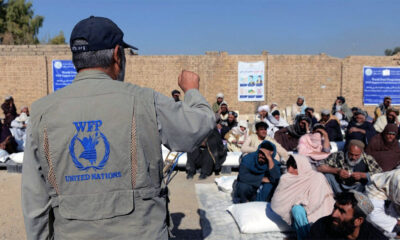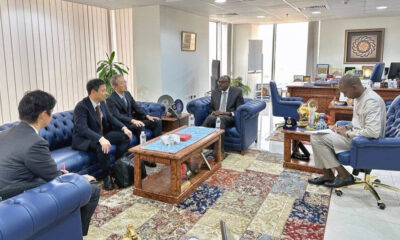Regional
Russia has secret war drones project in China, intel sources say
The Ukrainian government did not respond to a request for comment for this article.
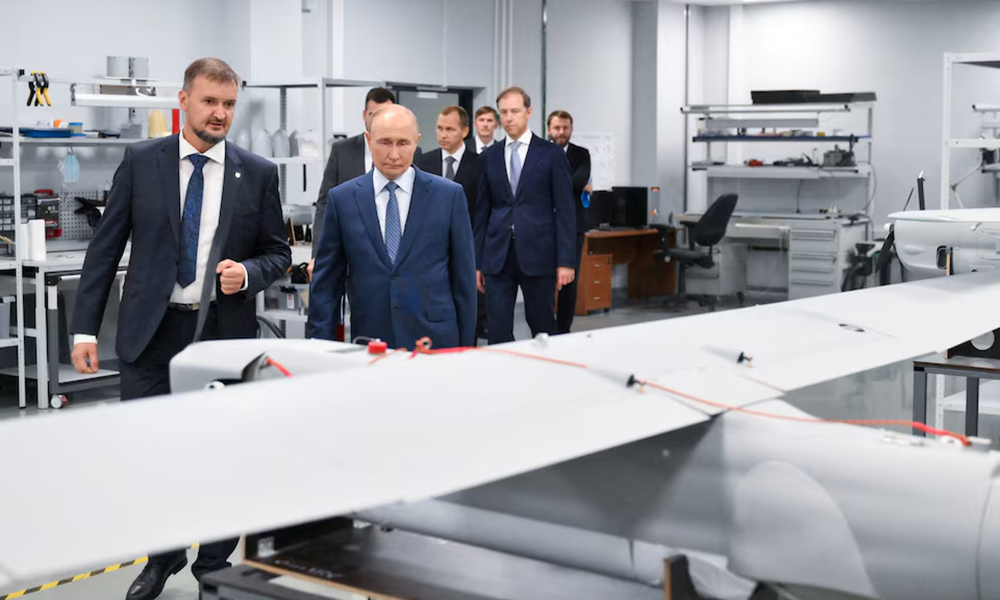
Russia has established a weapons programme in China to develop and produce long-range attack drones for use in the war against Ukraine, according to two sources from a European intelligence agency and documents reviewed by Reuters.
IEMZ Kupol, a subsidiary of Russian state-owned arms company Almaz-Antey, has developed and flight-tested a new drone model called Garpiya-3 (G3) in China with the help of local specialists, according to one of the documents, a report that Kupol sent to the Russian defence ministry earlier this year outlining its work.
Kupol told the defence ministry in a subsequent update that it was able to produce drones including the G3 at scale at a factory in China so the weapons could be deployed in the “special military operation” in Ukraine, the term Moscow uses for the war.
Kupol, Almaz-Antey and the Russian defence ministry did not respond to requests for comment for this article. China’s foreign ministry told Reuters it was not aware of such a project, adding that Beijing had strict control measures on the export of drones, or unmanned aerial vehicles (UAVs).
Fabian Hinz, a research fellow at the International Institute for Strategic Studies, a London-based defence think-tank, said the delivery of UAVs from China to Russia, if confirmed, would be a significant development.
“If you look at what China is known to have delivered so far, it was mostly dual-use goods – it was components, sub-components, that could be used in weapon systems,” he told Reuters. “This is what has been reported so far. But what we haven’t really seen, at least in the open source, are documented transfers of whole weapon systems.”
Still, Samuel Bendett, an adjunct senior fellow at the Center for a New American Security, a Washington-based think tank, said Beijing would be hesitant to open itself up to international sanctions for helping Moscow’s war machine. He said more information was needed to establish that China was playing host to production of Russian military drones.
The White House National Security Council said it was deeply concerned by the Reuters report of the drones programme, which it said appeared to be an instance of a Chinese company providing lethal assistance to a U.S.-sanctioned Russian firm.
The White House has not seen anything to suggest the Chinese government was aware of the transactions involved, but China has a responsibility to ensure companies aren’t providing lethal aid to Russia for use by its military, a spokesperson added.
Asked about the Reuters report, a NATO spokesperson said via email: “These reports are deeply concerning and Allies are consulting on this matter.”
“The Chinese government has a responsibility to ensure its companies are not providing lethal assistance to Russia,” added the spokesperson, Farah Dakhlallah. “China cannot continue to fuel the largest conflict in Europe since the Second World War without this impacting its interests and reputation.”
Britain’s Foreign Office called on China to stop providing diplomatic and material support to Russia’s war effort.
“We are extremely concerned by reports that Russia is producing military drones in China,” a spokesperson said.
“This adds to a growing body of open-source evidence that Chinese companies are enabling Russia’s illegal invasion of Ukraine. The supply of weapons would be a direct contradiction to statements from China that it would not provide weapons to relevant parties of the conflict.”
The G3 can travel about 2,000 km (1,200 miles) with a payload of 50 kg (110 pounds), according to the reports to the Russian defence ministry from Kupol, which was placed under U.S. sanctions in December 2023. Samples of the G3 and some other drone models made in China have been delivered to Kupol in Russia for further testing, again with the involvement of Chinese experts, they said.
The documents do not identify the Chinese drone specialists involved in the project that it outlined, and Reuters was unable to determine their identity, Reuters reported.
Kupol has taken delivery of seven military drones made in China, including two G3s, at its headquarters in the Russian city of Izhevsk, according to the two separate documents reviewed by Reuters, which are invoices sent to Kupol in the summer by a Russian firm that the two European intelligence sources said serves as an intermediary with Chinese suppliers. The invoices, one of which requests payment in Chinese yuan, do not specify delivery dates or identify the suppliers in China.
The two intelligence sources said the delivery of the sample drones to Kupol was the first concrete evidence their agency had found of whole UAVs manufactured in China being delivered to Russia since the Ukraine war began in February 2022.
They asked that neither they nor their organisation be identified due to the sensitivity of the information. They also requested certain details related to the documents be withheld, including their precise dates.
The sources showed Reuters five documents in all, including two Kupol reports to the ministry in the first half of the year and the two invoices, to support their claims of the existence of a Russian project in China to manufacture drones for use in Ukraine. The programme has not previously been reported.
Kupol’s reports did not give more precise locations for sites related to the project. Reuters was also unable to determine whether the defence ministry gave the company the green light to proceed with the serial production proposed.
Beijing has repeatedly denied that China or Chinese companies have supplied Russia with weapons for use in Ukraine, saying the country remains neutral.
In response to questions for this article, the foreign ministry told Reuters that China’s position presented a contrast with other nations with “double standards on arms sales” whom it said had “added fuel to the flames of the Ukrainian crisis”.
The ministry said earlier this month that there were no international restrictions on China’s trade with Russia, when responding to a Reuters report that Kupol had started to produce the Garpiya-A1 long-range military drone in Russia using Chinese engines and parts.
The new documents reported here indicate state-owned Kupol has gone further by sourcing complete UAVs from China.
Both Russia and Ukraine are racing to ramp up their production of drones, which have emerged as highly effective weapons in the war.
David Albright, a former U.N. weapons inspector who heads the Institute for Science and International Security research group, and has conducted extensive work on Chinese and Russian cooperation on drone production, told Reuters that Kupol could skirt Western sanctions on Russia by setting up a production facility in China where it could access advanced chips and expertise.
But Bendett at the Center for a New American Security said Beijing had reason to tread carefully: “For a factory to exist officially that builds UAVs for the Russians exposes China to some of the more severe effects of the sanctions, so it’s not clear the extent to which China would be willing to expose itself.”
The Ukrainian government did not respond to a request for comment for this article.
The G3 is an upgraded version of the Garpiya-A1 drone, according to Kupol’s reports sent to the defence ministry. It was redesigned by Chinese experts working off blueprints of the Garpiya-A1, they said.
Kupol said that within eight months, the project in China would be ready to produce a Chinese-designed REM 1 attack UAV with a payload of 400 kg. The two European intelligence sources said this system would be similar to the U.S. Reaper drone.
The sources said another Russian defence firm called TSK Vektor acted as the intermediary between Kupol and Chinese suppliers in the project. They said the Russian firms worked with a Chinese company called Redlepus TSK Vector Industrial, based in Shenzhen, without specifying Redlepus’ role, read the report.
TSK Vektor and Redlepus did not respond to requests for comment.
A separate document reviewed by Reuters reveals plans involving Kupol, TSK Vektor and Redlepus to establish a joint Russian-Chinese drone research and production centre in the Kashgar special economic zone in China’s Xinjiang province.
Reuters was unable to determine who produced the document, which bore the logos of the three companies, or identify the intended recipient.
The 80-hectare “Advanced UAV Research and Manufacturing Base” would be able to produce 800 drones a year, the document said. No timeline was given for when it would be operational.
Last week, Russian President Vladimir Putin said his military had received around 140,000 drones in 2023 and that Moscow planned to increase this number tenfold this year.
“Whoever reacts faster to demands on the battlefield wins,” he told a meeting in St Petersburg about drone production.
Regional
Iran can’t enrich uranium, could only import it for civilian program, Rubio says
Iran has denied wanting to develop a nuclear weapon and says its nuclear program is peaceful. U.S. and Iranian officials will meet in Oman on Saturday for a third round of talks.
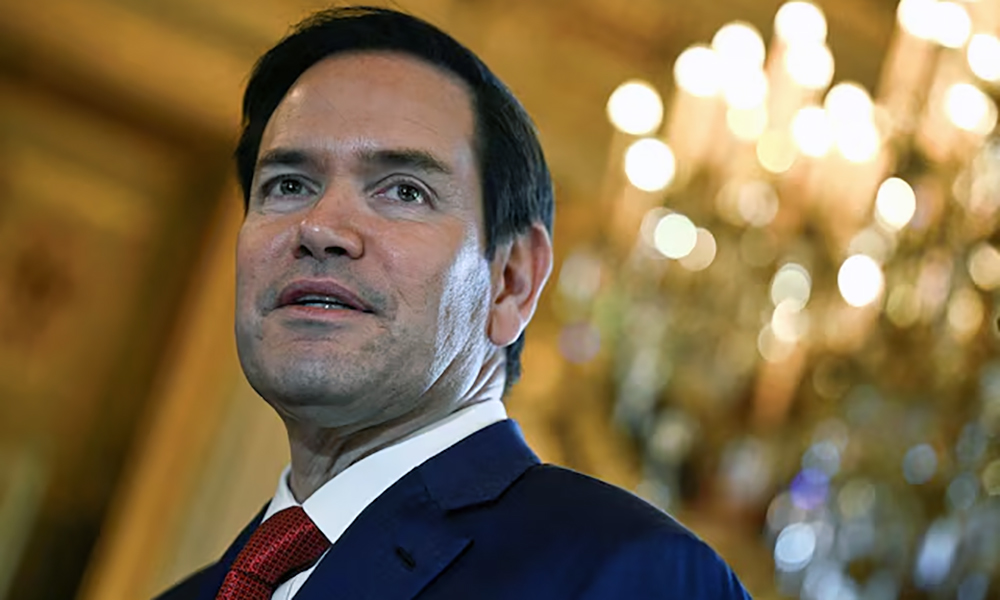
Iran will have to stop enriching uranium under any deal with the United States and could only import what is needed for a civilian nuclear program, U.S. Secretary of State Marco Rubio said ahead of talks between Tehran and Washington on Saturday, Reuters reported.
However, Iran has already made clear that its right to enrich uranium is not negotiable. When asked about Rubio’s comments, a senior Iranian official, close to Iran’s negotiating team, again said on Wednesday “zero enrichment is unacceptable.”
The U.S. is seeking to prevent Iran from developing a nuclear bomb and President Donald Trump has imposed a “maximum pressure” campaign of sanctions and threatened to use military force if Iran does not end its nuclear program.
Iran has denied wanting to develop a nuclear weapon and says its nuclear program is peaceful. U.S. and Iranian officials will meet in Oman on Saturday for a third round of talks on Tehran’s disputed nuclear program.
“There’s a pathway to a civil, peaceful nuclear program if they want one,” Rubio told the “Honestly with Bari Weiss” podcast on Tuesday.
“But if they insist on enriching, then they will be the only country in the world that doesn’t have a ‘weapons program,’ … but is enriching. And so I think that’s problematic,” he said.
U.S. Middle East envoy Steve Witkoff last week said Iran does not need to enrich past 3.67% – a remark that raised questions as to whether Washington still wanted Tehran to dismantle its enrichment program, read the report.
Witkoff then said a day later that Iran must “stop and eliminate its nuclear enrichment.”
Rubio said on Tuesday that Witkoff was initially talking about “the level of enriched material that they would be allowed to import from outside, like multiple countries around the world do for their peaceful civil nuclear programs.”
“If Iran wants a civil nuclear program, they can have one just like many other countries in the world have one, and that is they import enriched material,” he said.
The U.N. nuclear watchdog – the International Atomic Energy Agency – has said that Iran is “dramatically” accelerating enrichment of uranium to up to 60% purity, close to the roughly 90% weapons-grade level.
Western countries say there is no need to enrich uranium to such a high level for civilian uses and that no other country has done so without producing nuclear bombs.
Regional
Lavrov in Uzbekistan for talks on various issues including regional security matters
Lavrov is expected to meet with Uzbek President Shavkat Mirziyoyev and with Uzbek Foreign Minister Bakhtiyor Saidov
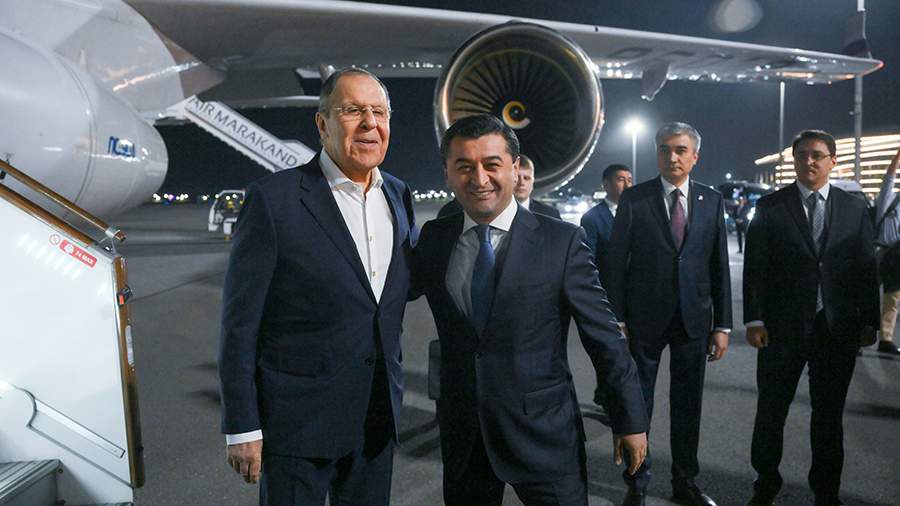
Russian Foreign Minister Sergey Lavrov will meet with Uzbek government officials this week to discuss bilateral relations, Eurasian integration and preparations for the upcoming 80th anniversary of victory over Nazi Germany.
The Russian Foreign Ministry’s official spokeswoman, Maria Zakharova, said Lavrov is expected to meet with Uzbek President Shavkat Mirziyoyev and will hold talks with Uzbek Foreign Minister Bakhtiyor Saidov, TASS reported.
“The sides will discuss current international issues of mutual interest, regional security matters, cooperation within the CIS, SCO and Central Asia-Russia frameworks, taking into account the closeness or similarity between Moscow and Tashkent’s approaches,” Zakharova said adding that “the agenda will also include matters of Eurasian integration processes with Uzbekistan’s observer status in the EAEU in mind.”
During his meetings with leaders of the Commonwealth of Independent States (CIS) last December, Russian President Vladimir Putin invited them to attend the Victory Day celebrations in Moscow scheduled to be held on May 9.
Also, military units from 19 friendly nations have been invited to participate in the Red Square Parade. The list of these countries has not yet been published, but Uzbek troops marched in the Red Square five years ago, during the 75th anniversary of Victory in the Great Patriotic War.
Uzbekistan traditionally holds numerous Victory Day celebrations and campaigns.
Meanwhile, the Russian Foreign Ministry has emphasized that Moscow and Tashkent have “constructive, respectful and mutually beneficial ties, based on the principles of friendship, sovereign equality and respect to each other’s interests.”
The sides actively cooperate in trade, energy, science and humanitarian affairs.
Special attention will be paid to the issue of labor migrants, as around 1.1 million Uzbek citizens are employed in various sectors in Russia.
Talks will also reportedly include Afghanistan, as this is an important subject for the two nations, TASS reported.
Other regional and global issues are also expected to be touched upon during Lavrov’s meetings with Uzbek officials in Samarkand.
Regional
At least 20 feared killed in militant attack on tourists in Indian Kashmir, security sources say
One security source put the death toll at 20; the second put it at 24 and the third at 26. All three spoke on condition of anonymity as they were not authorised to speak to the media.
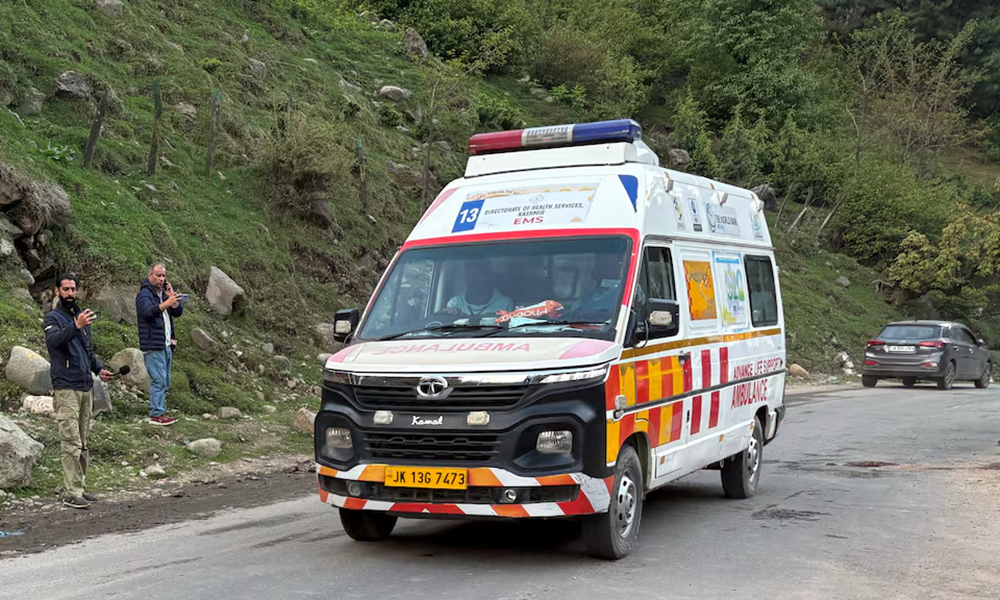
At least 20 people were feared killed after suspected militants opened fire on tourists in India’s Jammu and Kashmir territory on Tuesday, three security sources said, the worst attack on civilians in the troubled Himalayan region for years, Reuters reported.
The attack occurred in Pahalgam, a popular destination in the scenic, mountainous region where mass tourism, especially during the summer, has resurged as Islamist militant violence has eased in recent years.
One security source put the death toll at 20; the second put it at 24 and the third at 26. All three spoke on condition of anonymity as they were not authorised to speak to the media.
“The firing happened in front of us,” one witness told broadcaster India Today, without giving his name. “We thought someone was setting off firecrackers, but when we heard other people (screaming), we quickly got out of there … saved our lives and ran.”
“For four kilometers, we did not stop … I am shaking,” another witness told India Today.
The attack occurred in an off-the-road meadow and two or three militants were involved, the Indian Express newspaper reported, citing an unidentified senior police officer.
“The death toll is still being ascertained so I don’t want to get into those details,” Jammu and Kashmir Chief Minister Omar Abdullah said in a post on X. “Needless to say, this attack is much larger than anything we’ve seen directed at civilians in recent years.”
The nationalities of the victims were not immediately known, read the report.
A little-known militant group, the “Kashmir Resistance,” claimed responsibility for the attack in a social media message. It expressed discontent that more than 85,000 “outsiders” had been settled in the region, spurring a “demographic change”.
“Consequently, violence will be directed toward those attempting to settle illegally,” it said.
Reuters could not independently verify the source of the message.
The regional government of Jammu and Kashmir, where Pahalgam is located, told its legislature this month that nearly 84,000 non-locals, from within India, had been given domicile rights in the territory in the last two years.
“Those behind this heinous act will be brought to justice … They will not be spared!” Indian Prime Minister Narendra Modi posted on X. “Their evil agenda will never succeed. Our resolve to fight terrorism is unshakable and it will get even stronger.”
Indian Home Minister Amit Shah said he was rushing to Kashmir to hold a security meeting.
In Washington, the White House said U.S. President Donald Trump had been briefed on what a White House spokesperson described as a “brutal terrorist attack.”
India’s foreign ministry subsequently said Trump called Modi and “expressed full support to India to bring to justice the perpetrators of this heinous attack.”
Militant violence has afflicted the Himalayan region, claimed in full but ruled in part by both India and Pakistan, since an anti-Indian insurgency began in 1989. Tens of thousands of people have been killed, although violence has tapered off in recent years, Reuters reported.
India revoked Kashmir’s special status in 2019, splitting the state into two federally administered territories – Jammu and Kashmir, and Ladakh. The move allowed local authorities to issue domicile rights to outsiders, allowing them to get jobs and buy land in the territory.
That led to a deterioration of ties with Pakistan, which also claims the region. The dispute has spurred bitter animosity and military conflict between the nuclear-armed neighbours.
Attacks targeting tourists in Kashmir have become rare. The last deadly incident took place in June 2024 when at least nine people were killed and 33 injured after a militant attack caused a bus carrying Hindu pilgrims to plunge into a deep gorge.
Some major militant attacks during the height of the insurgency coincided with visits from high-profile foreign officials to India, in likely attempts to draw global attention to Kashmir, Indian security agencies have said.
Tuesday’s attack came a day after U.S. Vice President JD Vance began a four-day, largely personal visit to India.
-
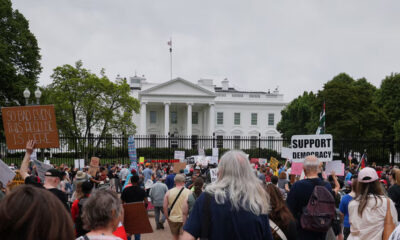
 World5 days ago
World5 days agoThousands of protesters rally against Trump across US
-

 Latest News5 days ago
Latest News5 days agoPolio vaccination campaign launched in Afghanistan
-

 International Sports3 days ago
International Sports3 days agoIPL 2025: Robo-Dog ‘Champak’ explained
-

 International Sports5 days ago
International Sports5 days agoIPL 2025: 14-year-old Vaibhav Suryavanshi becomes youngest IPL player
-

 Latest News3 days ago
Latest News3 days agoAriana Afghan Airlines increases flights to China
-

 World4 days ago
World4 days agoPentagon chief Hegseth shared sensitive Yemen war plans in second Signal chat, source says
-
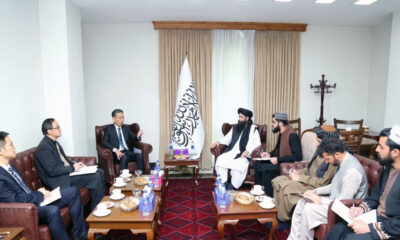
 Latest News4 days ago
Latest News4 days agoChina invites various Afghan delegations to attend Shanghai forums
-
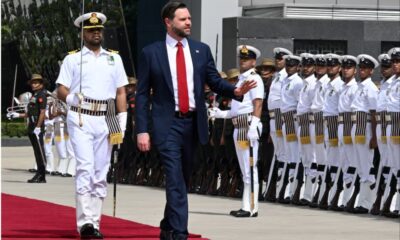
 Regional4 days ago
Regional4 days agoJD Vance arrives in India, to hold talks with Modi under US tariffs shadow






